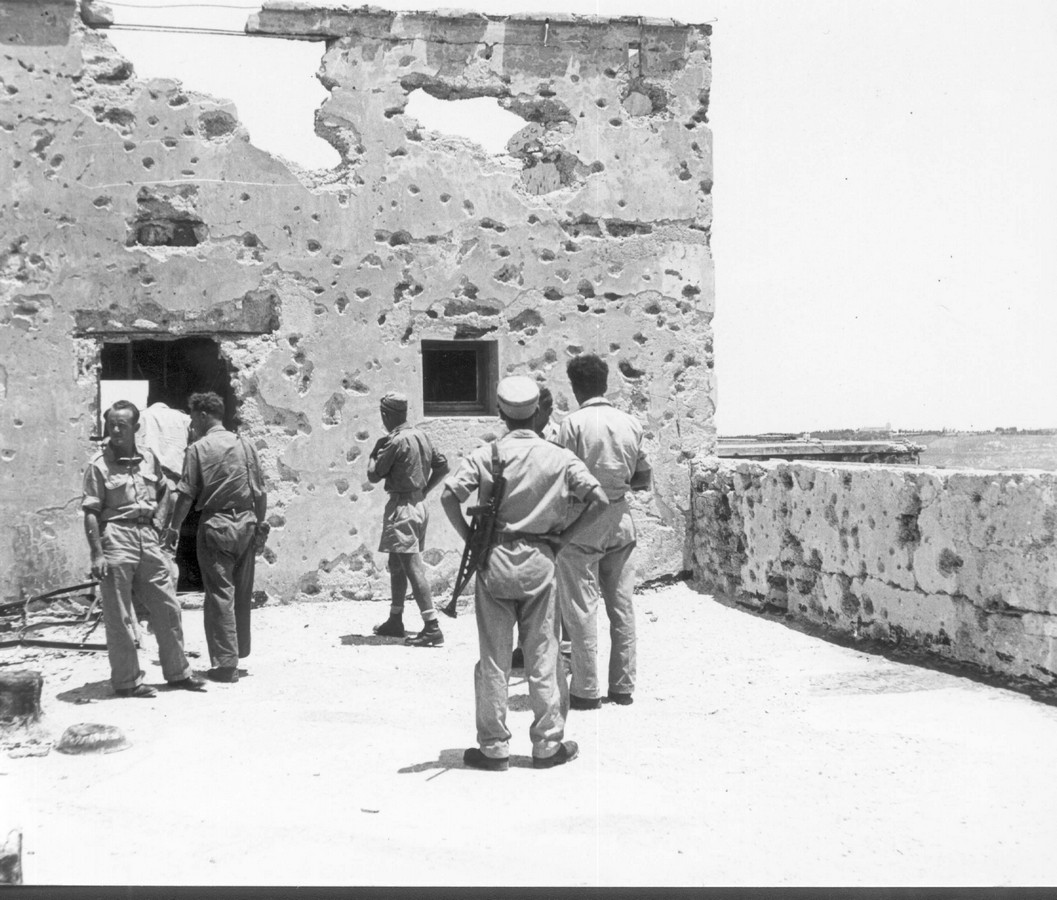The Ramat Rachel Battles
During the War of Independence the kibbutz served as a forward position in Israel's defense and was heavily attacked. In the early months of the war, it was cut off from the city and attacked several times by local Arabs. Together with the Egyptians they carried out severe attacks. The defenders withdrew amid heavy losses, and the Egyptians captured Ramat Rachel. Members of the "Hagana and the Palmach's 5th Battalion counter-attacked, recapturing the kibbutz.
During the War of Independence the kibbutz served as a forward position in Israel's defense and was heavily attacked. In the early months of the war, it was cut off from the city and attacked several times by local Arabs. In Operation Kilshon the siege was lifted and contact with the kibbutz was restored.
On its way to the southern suburbs of Jerusalem the Egyptian invader ascended Mount Hebron, and when it reached the gates of Jerusalem via Bethlehem, it had to overcome Ramat Rachel, which controlled the main road.
The Arab army in the area numbered about 1500 fighters, of whom 400 were regular Egyptian soldiers, as well as 6 armored vehicles each carrying two-liter cannons, a battery of field cannons and eight 3" mortars. They were confronted by 500 'South Kishon' fighters from the Jerusalem district.
After the removal all the non-fighting population on the night before the invasion, some 80 kibbutz members were left to defend it, armed with two machine-guns and an anti-tank rifle.
he assaults on the kibbutz began on 19.5 and continued for three days, causing heavy damage to property. The local commander demanded reinforcements, but received no response, and the settlement was on the brink of collapse.
On its way to the southern suburbs of Jerusalem the Egyptian invader ascended Mount Hebron, and when it reached the gates of Jerusalem via Bethlehem, it had to overcome Ramat Rachel, which controlled the main road.
The Arab army in the area numbered about 1500 fighters, of whom 400 were regular Egyptian soldiers, as well as 6 armored vehicles each carrying two-liter cannons, a battery of field cannons and eight 3" mortars. They were confronted by 500 'South Kishon' fighters from the Jerusalem district.
After the removal all the non-fighting population on the night before the invasion, some 80 kibbutz members were left to defend it, armed with two machine-guns and an anti-tank rifle.
he assaults on the kibbutz began on 19.5 and continued for three days, causing heavy damage to property. The local commander demanded reinforcements, but received no response, and the settlement was on the brink of collapse.


















